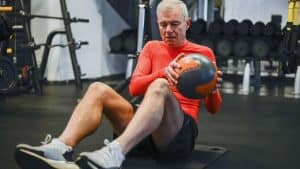Walking after meals is one of the simplest, science-backed strategies to improve digestion, stabilize blood sugar, and burn fat. While many obsess over workout plans and restrictive diets, just 10–15 minutes of walking after you eat can be a game-changer for weight loss.
Let’s explore the math, biology, and behavior behind why this one habit supports fat loss and body recomposition.
How Does Walking After Meals Help You Lose Weight?
Fat loss is a numbers game. To lose one pound of fat, you need to create a 3,500-calorie deficit. Walking after each meal burns approximately 30–50 calories per session, depending on your weight and walking speed.
Walk 3 times a day (after each meal) and you’re burning up to 1,050 calories per week—over 15 pounds of fat per year without ever stepping in a gym.
But there’s more: walking after eating improves blood glucose management, meaning your body stores less fat and uses more glucose for energy.
What Happens to Blood Sugar When You Walk Post-Meal?
When you eat, your blood sugar rises. The pancreas releases insulin to store glucose in muscle or fat tissue.
If you’re sedentary after eating, much of that glucose gets stored as body fat.
Walking stimulates muscle contractions, which act like an independent insulin system—allowing muscles to absorb glucose without relying on insulin. This:
- Reduces blood sugar spikes
- Lowers insulin levels
- Improves fat oxidation
A study published in Diabetes Care found that just 15 minutes of post-meal walking lowered blood sugar levels more than a single 45-minute walk once per day.
How Long Should You Walk After a Meal?
The sweet spot is 10 to 20 minutes at a moderate pace (2.5–3.5 mph). That’s long enough to stabilize glucose and short enough to stay practical—even on a workday.
Schedule:
- After breakfast: Walk around your block or office complex
- After lunch: Take a light stroll outside or on a treadmill
- After dinner: Walk with your partner, dog, or favorite podcast
Total: 30–60 minutes per day of walking, all built into your current meal routine.
What Are the Best Foods to Pair with Post-Meal Walks?
Walking works best when paired with complex carbs, lean proteins, and healthy fats:
- Brown rice, sweet potatoes, quinoa
- Chicken breast, salmon, tofu
- Avocados, olive oil, nuts
Avoid high-sugar or ultra-processed foods that cause rapid blood sugar spikes. Walking can’t outpace a poor diet.
Can Walking After Meals Replace Exercise?
Not entirely, but it can do more than you think:
- Supports fat loss through calorie burn
- Aids recovery on non-training days
- Improves digestion and mental clarity
- Increases NEAT, which accounts for up to 15–30% of total calorie burn in active individuals
If fat loss is your main goal, combining post-meal walks with strength training 3 times a week and a calorie-controlled diet is a powerful trifecta.
Additional Benefits of Walking After Eating
- ✅ Reduces bloating and gas
- ✅ Enhances sleep when done after dinner
- ✅ Lowers blood pressure
- ✅ Decreases post-meal fatigue
- ✅ Reduces cravings and emotional eating triggers
Consistency, not intensity, drives results.
Key Takeaways
- Walking after meals aids weight loss by lowering blood sugar and increasing NEAT.
- Just 10–15 minutes per walk adds up to significant weekly fat burn.
- Walk after each main meal for optimal results.
- Pair with whole foods and resistance training for best outcomes.
- You’ll lose fat, feel better, and improve your long-term health—all with one simple habit.
🚶 Post-Meal Walking Toolkit
Make your walks more effective and enjoyable with these essentials:
- ⌚ Amazfit Band 7 – Track Your Post-Meal Steps
- 🥤 Hydro Flask Water Bottle – Stay Hydrated While Walking
- 👟 Skechers Go Walk Sneakers – Designed for Comfort After Meals
“A simple walk after each meal can change your metabolism forever.”
Subscribe now and get a 14-day free trial workout app for iPhone users.






